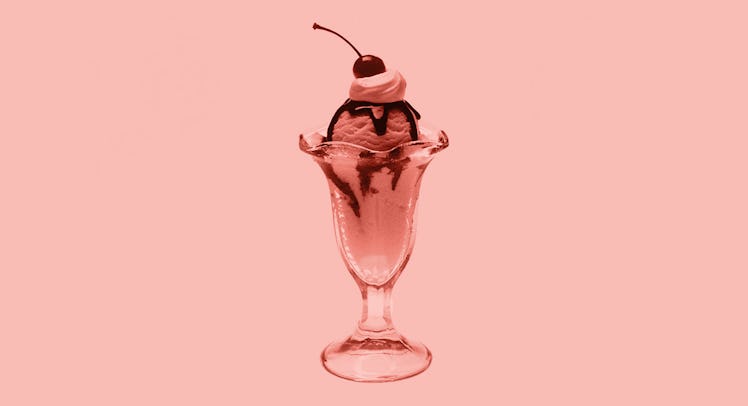Why Ice Cream Becomes Gross When You Refreeze It
Why your sundae tastes more like a Monday, according to a flavor scientist.

Don’t take ice cream for granted. Ice cream forces the natural enemies fat and water together, and freezes them in sweet harmony. It’s a dessert born of a delicate scientific process—even the slightest error can spell the difference between a perfect scoop and an icy, grainy, glop.
“There’s a complex matrix that has to come together to create this delicious treat,” Morgan Craig, a flavor Scientist at Hudsonville Creamery, told Fatherly. “There’s your fat, your backbone of sugar and water, and stabilizers and emulsifiers that work hard to make sure that all of those different particles can stay in the same solution, because fat and water don’t like each other.”
In order to carry the title “ice cream”, the U.S. Food and Drug Administration requires the concoction to contain at least 20 percent milk and butter fat, that is frozen while being churned. But it doesn’t legally have to taste good. Making delicious ice cream is a matter of the quality of the ingredients, how far the cream has to travel, and even how the cows are treated, Craig says.
Once you have solid ingredients, the first potential pitfall involves the the milk and butterfat pasteurization process. Most ice creams are made using high-temperature-short-time pasteurization, which occurs at around 150 degrees Fahrenheit for about 30 minutes. During this time, ice cream can take on somewhat of an overcooked flavor, which Craig compares to the browning of bread. Depending on personal taste, this can be considered a flaw.
After pasteurization, ice cream is homogenized. This takes all the particles in the milk and cream and turns them into single fat molecules, which can then be evenly dispersed as air is whipped into the mixture. And here is where the worst ice creams are born. Because the air forms tiny ice crystals that need to remain frozen and uniform in order for the ice cream to stay smooth. That means storing the ice cream at 20 degrees below zero, from the creamery to your kitchen—an unlikely scenario. Every time the ice cream thaws and refreezes—in transport, in the supermarket, in your kitchen—the ice crystals expand and distort, giving the dessert a gritty, icy texture.
Chemical proteins called stabilizers (guar gum, carob bean gum, cellulose gum) prevent a lot of this distortion, and egg yolks provide a natural alternative to scary-sounding chemicals. But eventually even the best stabilizers will fail, Craig says. “And that’s when you’ll get ice crystals.”
There are other issues that pop up in the ice cream business. Too much air whipped into the cream demotes it to a mere “frozen dairy dessert”; not enough air leaves the sweet tooth with a dense block of cream to chew on. And then there’s the elusive problem of “sandy” ice cream, which happens when lactose molecules expand due to thawing and freezing. “I’m not a dairy judge, so I can’t really tell the difference between a sandy ice cream and a icy one. They both taste rough to me,” Craig says. Besides, “taste is very subjective,” Craig muses. “One person can think something is delicious and delightful, and another person can be an ice cream snob.”
This article was originally published on